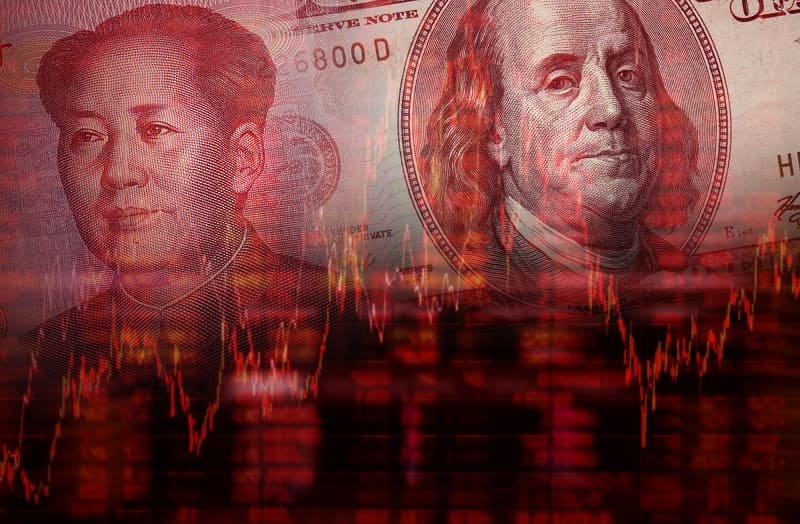China doubles down on practical AI as America spends billions and burns energy
- Silver Price Forecast: XAG/USD surges to record high above $56 amid bullish momentum
- Silver Price Forecast: XAG/USD bulls remain focused on the $54.40 level
- Fed Chair Candidate: What Would a Hassett Nomination Mean for U.S. Stocks?
- The 2026 Fed Consensus Debate: Not Hassett, It’s About Whether Powell Stays or Goes
- U.S. PCE and 'Mini Jobs' Data in Focus as Salesforce (CRM) and Snowflake (SNOW) Report Earnings 【The week ahead】
- AUD/USD holds steady below 0.6550 as traders await Australian GDP release

America is throwing billions of dollars and burning through massive energy reserves in an arms race to dominate artificial intelligence before China gets there first.
The goal for Washington is to build artificial general intelligence (AGI) powerful enough to outthink humans, and the Trump administration has said time and time again that AI will completely flip the global order as we inevitably descend into a dystopia.
But China is not chasing that fantasy.
You see, President Xi Jinping has ordered China’s tech companies like DeepSeek to stay grounded and build tools that work now. Xi wants software that helps farmers plant rice better and helps cops respond faster. Beijing’s endgame is intelligent systems that make life more efficient and can be exported everywhere, according to Xi.
China funds practical AI while the U.S. pours cash into AGI
Xi hasn’t said much about AGI in years. Instead, he wants tech companies in China to develop “application-oriented” systems. Local government reports show Chinese language models similar to ChatGPT are grading school exams, improving weather accuracy, dispatching emergency teams, and giving farmers advice on crop rotation.
At Tsinghua University in Beijing, doctors are now working alongside virtual AI colleagues that provide up-to-date medical insights. Robots are running textile checks and automotive production lines in “dark factories” without any human staff.
The U.S. is building plenty of real-world tools too. Google’s Pixel phones translate speech on the spot. American consultants are using AI to write reports and decks. Other U.S. firms are working on AI for drug discovery and logistics. But Washington doesn’t manage this directly. In China, the state is deeply involved.
In January, Beijing announced an $8.4 billion AI fund for startups. Since then, provinces, banks, and cities have created their own AI support programs under the national “AI+” campaign. On Tuesday, the cabinet outlined broader goals: use AI in science labs, industry, and education to support economic development through 2030.
Unlike Silicon Valley, China is pushing open-source AI. Their models are free to download and modify, cutting down costs and helping local companies build faster. This tactic has started to ripple into the West, with some U.S. developers now also turning to open models.
U.S. chases AGI while China focuses on the tools it already has
American companies OpenAI, Meta, and Google are still betting on AGI, believing that these machines could open up entire new sectors and give Washington massive advantages when another war breaks out.
And the Wall Street Journal predicts artificial superintelligence could emerge by 2027, so to get there, companies are naturally rushing to stockpile chips, hire talent, and build massive data centers. A congressional committee has even proposed a full-scale “Manhattan Project” for AGI, saying its purpose is to guarantee U.S. leadership in the field.
But OpenAI’s recent release of GPT-5, which was promised to be a big step toward AGI, fell flat last month after CEO Sam Altman admitted publicly that the launch was messy and even warned of a possible AI investment bubble.
Eric Schmidt, former CEO of Google, and tech analyst Selina Xu wrote in The New York Times, “In being solely fixated on this objective, our nation risks falling behind China, which is far less concerned with creating AI powerful enough to surpass humans and much more focused on using the technology we have now.”
In Xiong’an, a new city built south of Beijing, China is already embedding AI in everything. In February, local officials deployed an agricultural AI tool built by DeepSeek to help farmers choose crops, manage pests, and handle planting schedules. The city’s weather team uses it to improve forecasts. Police departments use it to analyze case data and decide how to react.
Xiong’an’s 12345 hotline, a government help center that handles hundreds of thousands of calls daily, uses DeepSeek to sort and route messages. These aren’t pilot programs. They’re operational.
China is also spending big on data centers. But unlike the sprawling U.S. facilities designed for AGI training, the ones in China are smaller and designed to support apps that already exist. U.S. restrictions on high-end chips are making it harder for China to train massive models. So they’re focusing on deployment instead.
Still, China isn’t ignoring AGI completely. Alibaba and DeepSeek both say they have AGI goals. Analysts think Xi may be holding back on pushing AGI aggressively … at least for now.
Read more
* The content presented above, whether from a third party or not, is considered as general advice only. This article should not be construed as containing investment advice, investment recommendations, an offer of or solicitation for any transactions in financial instruments.

